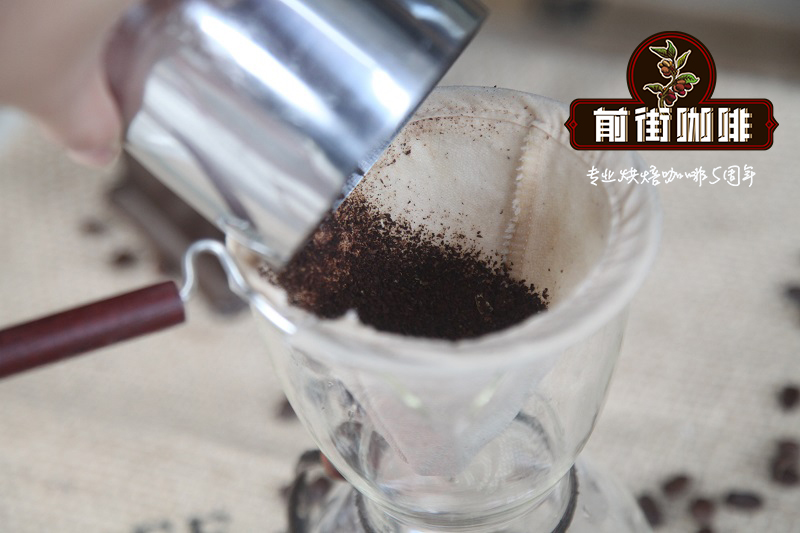Why did Peru, the pioneer of organic coffee, find organic coffee?

Professional coffee knowledge exchange more coffee bean information please follow the coffee workshop (Wechat official account cafe_style)
Peru is located in western South America, bordering the South Pacific Ocean, between Chile and Ecuador. Peru has a very diverse climate, from the tropics in the east to the dry deserts in the west, and from the temperate zone to the cold of the Andes. Different climates are closely linked to the main geographical areas of Peru, including the western coastal plains, the central Andes, and the lowland jungles of the eastern Amazon basin.
Although coffee arrived in Peru in the mid-1700, Peruvian coffee did not begin to be exported commercially until the 20th century, when European demand increased and Indonesian coffee production declined significantly. Britain's presence and influence in the country particularly helped to increase and promote exports; at the beginning of the 20th century, the British government bought about 2 million hectares of land from the Peruvian government as payment of defaulted loans, most of which became British-owned coffee plantations.
Today, Peru has more than 110000 coffee growers. Peruvian coffee exports account for 2% of the national economy and 2% of the global coffee supply. Peru is rapidly building a coffee industry chain with excellent planting technology.
But why did Peru find the market for organic coffee?

Peruvian coffee fields are mainly distributed in the areas of Cacumaca in the north, Cusco and Norp in the south. 70% of the coffee varieties are iron pickups, 20% are Kaddura, and the rest are Kadim and other varieties. About 75 per cent of coffee growing areas are located at an altitude of 1000-1800 metres above sea level, while 2000 plants per hectare are grown in shady areas. Agriculture is mainly done by small farmers, and the planting area of organic coffee is 90,000 hectares.
Peru, as the eighth largest coffee producer in the world, has found great business opportunities for organic coffee in Europe and the United States in the past decade, while coffee fields in the Peruvian mountains have no running water and electricity, and poor Indian farmers have been accustomed to organic cultivation since ancient times. up to now, they still cannot afford to buy or use pesticides and fertilizers. The authorities are taking advantage of the opportunity to develop the organic coffee industry, which is mentored and certified by the Government. If they meet the requirements, organic certificates will be issued to facilitate export.
Peruvian organic coffee has low production costs, making it the world's largest and cheapest exporter of organic coffee. The other two major organic coffee producers are Mexico and Ethiopia, but at higher prices. The authorities intend to develop Peru into the world's leading organic coffee country, just as Vietnam is the world's largest producer of Robusta, but the floor price strategy has caused resentment in many producing countries. Although Peru dumps organic coffee at a low price, this does not mean that boutique coffee is extinct. In the 2010 SCAA Coffee of the year cup test, the tin card produced by Cecovasa in Tunkimayo, a small town in Puno, southeastern Peru, narrowly beat the rosy summer of the famous Panamanian emerald estate with a high score of 89.2, winning fifth place.
Important Notice :
前街咖啡 FrontStreet Coffee has moved to new addredd:
FrontStreet Coffee Address: 315,Donghua East Road,GuangZhou
Tel:020 38364473
- Prev

Is Kenyan coffee brewed or brewed? how do you drink Kenyan coffee?
Professional coffee knowledge exchange more information about coffee beans Please follow the coffee workshop (Wechat official account cafe_style) when it comes to coffee production, Kenya has always had a reputation for excellence in quality. This may have something to do with its geographical location, after all, close to the birthplace of coffee beans. Since coffee beans have traveled from Ethiopia through the mountains to Kenya, Kenya has become
- Next

What is Peruvian raccoon shit coffee? Why is Peruvian raccoon shit coffee so expensive?
Professional coffee knowledge exchange more coffee bean information Please pay attention to the coffee workshop (Wechat official account cafe_style) Peruvian coffee is very popular in the international market in recent years, frequently won the international coffee gold prize, Peruvian coffee taste and soft sour taste is very popular. Now Peru has become the world's third largest exporter of coffee, especially a kind of coffee derived from raccoon feces.
Related
- Detailed explanation of Jadeite planting Land in Panamanian Jadeite Manor introduction to the grading system of Jadeite competitive bidding, Red bid, Green bid and Rose Summer
- Story of Coffee planting in Brenka region of Costa Rica Stonehenge Manor anaerobic heavy honey treatment of flavor mouth
- What's on the barrel of Blue Mountain Coffee beans?
- Can American coffee also pull flowers? How to use hot American style to pull out a good-looking pattern?
- Can you make a cold extract with coffee beans? What is the right proportion for cold-extracted coffee formula?
- Indonesian PWN Gold Mandrine Coffee Origin Features Flavor How to Chong? Mandolin coffee is American.
- A brief introduction to the flavor characteristics of Brazilian yellow bourbon coffee beans
- What is the effect of different water quality on the flavor of cold-extracted coffee? What kind of water is best for brewing coffee?
- Why do you think of Rose Summer whenever you mention Panamanian coffee?
- Introduction to the characteristics of authentic blue mountain coffee bean producing areas? What is the CIB Coffee Authority in Jamaica?

